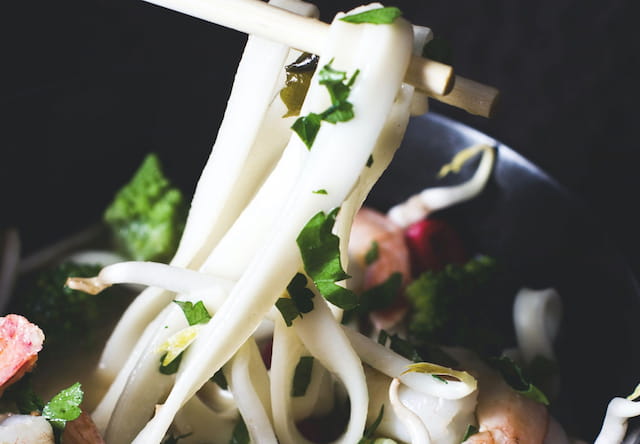Along with their cousins, yakisoba and ramen, udon noodles are one of Japan’s most popular staples. These noodles are fundamental to Japanese cuisine thanks to their many culinary possibilities: they can be served hot or cold, with or without broth. In addition, their width and thickness give them a uniquely soft, springy texture that treats your palate to a one-of-a-kind experience.
If you’re not yet very familiar with these noodles, here’s everything you need to know to become an expert on this icon of Japanese cuisine.
What exactly are udon noodles?
The defining characteristic of these noodles is their thickness. Udon are white and thick, with a slightly sticky, elastic bite. They’re made with wheat flour and salted water. The most intriguing part is the traditional production technique: the dough is kneaded with the feet—don’t worry, it’s wrapped in plastic.
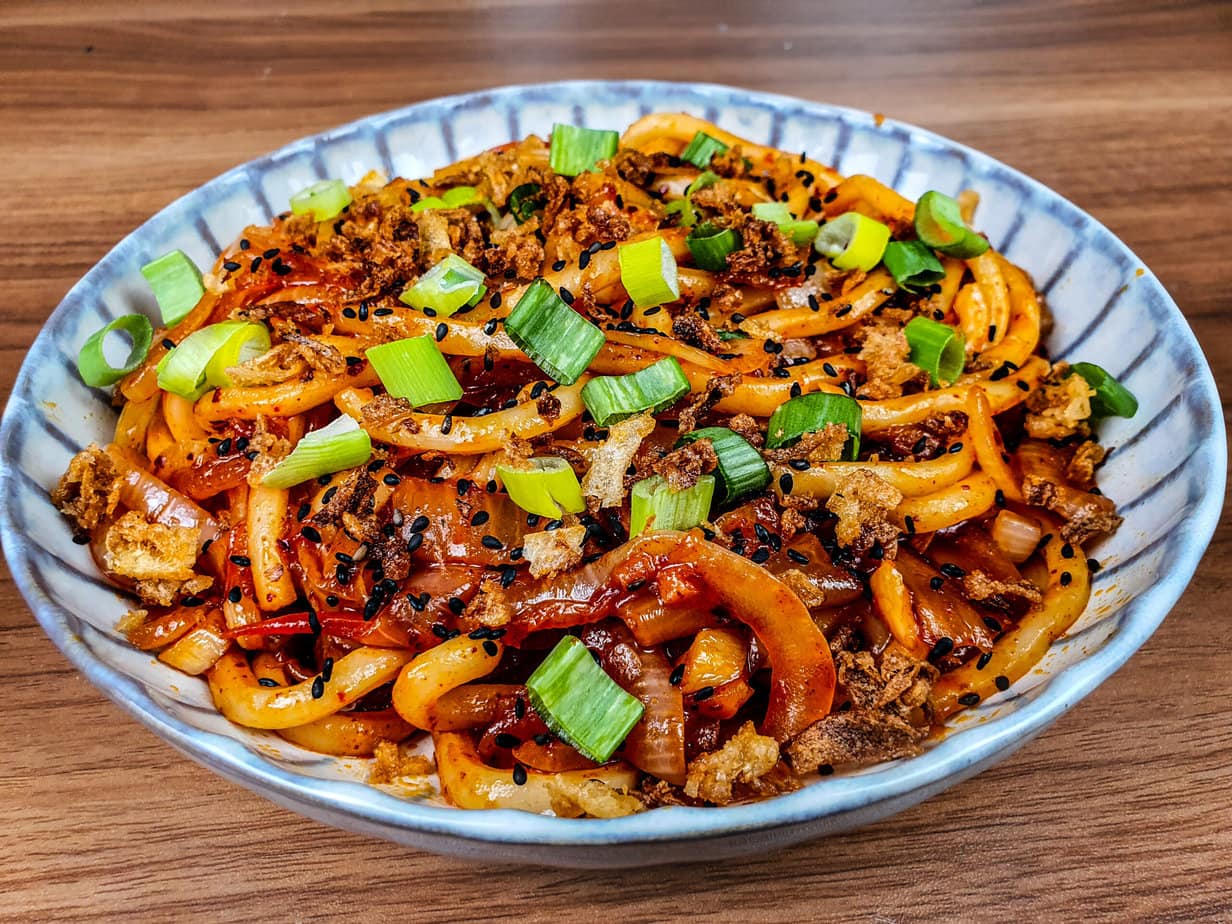
In Japan, there are two main styles of udon: Kanto, from the Tokyo region, and Kansai, from the Osaka, Kyoto, and Kobe regions. Noodles from the Osaka area differ from those of the capital in texture and color: they’re whiter and softer. Beyond regional styles, there are also different noodle shapes depending on the type of udon dish. For example, kishimen is a flatter style of udon, while inaniwa is much thinner.
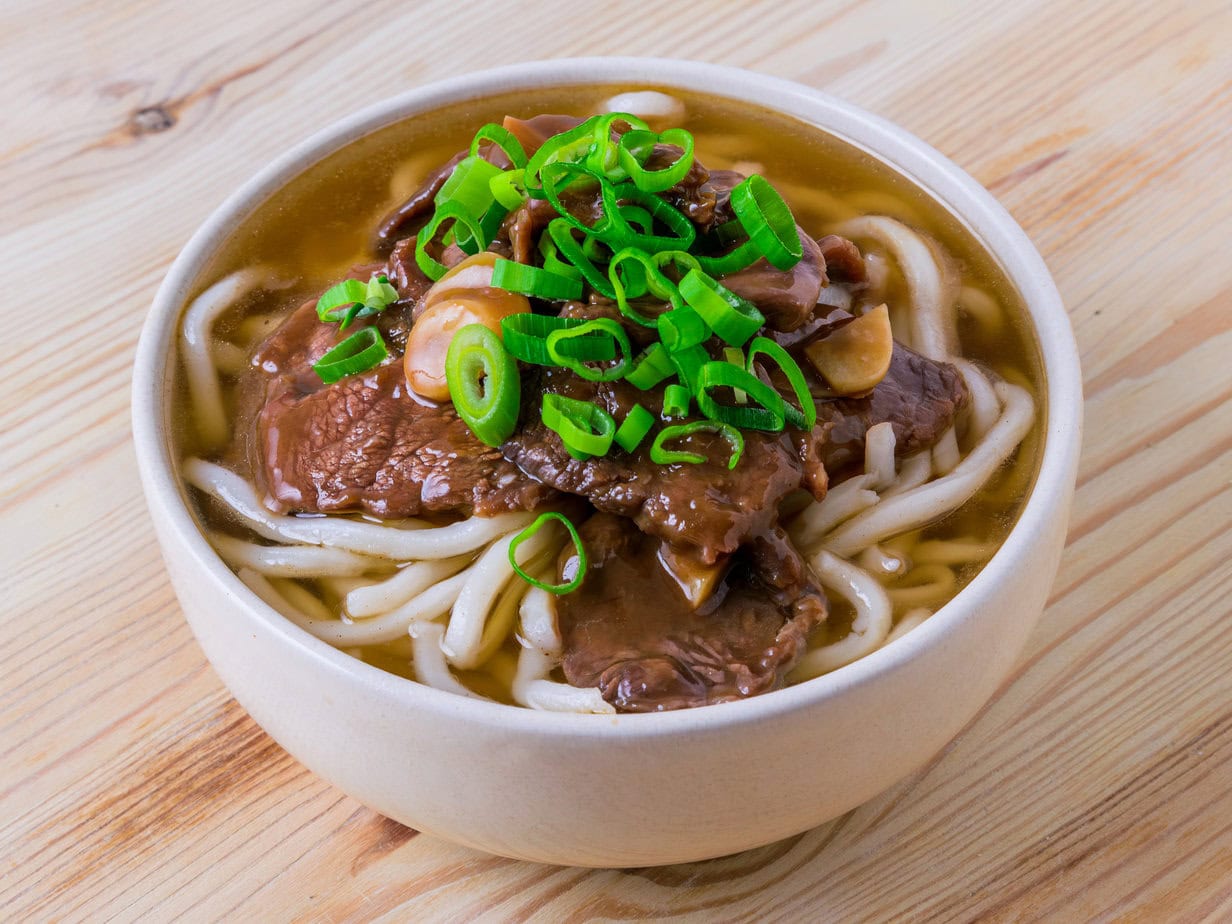
Udon are often called the noodles of a thousand and one recipes because they’re so versatile—you can riff endlessly. When served hot, yaki udon is perhaps one of the best-known dishes outside Japan. It’s made by stir-frying the noodles with soy sauce until it caramelizes, much like yakisoba, then adding meat and vegetables. Here’s my famous yaki udon recipe.
Koreans have also embraced these noodles in beefy favorites like bulgogi udon.
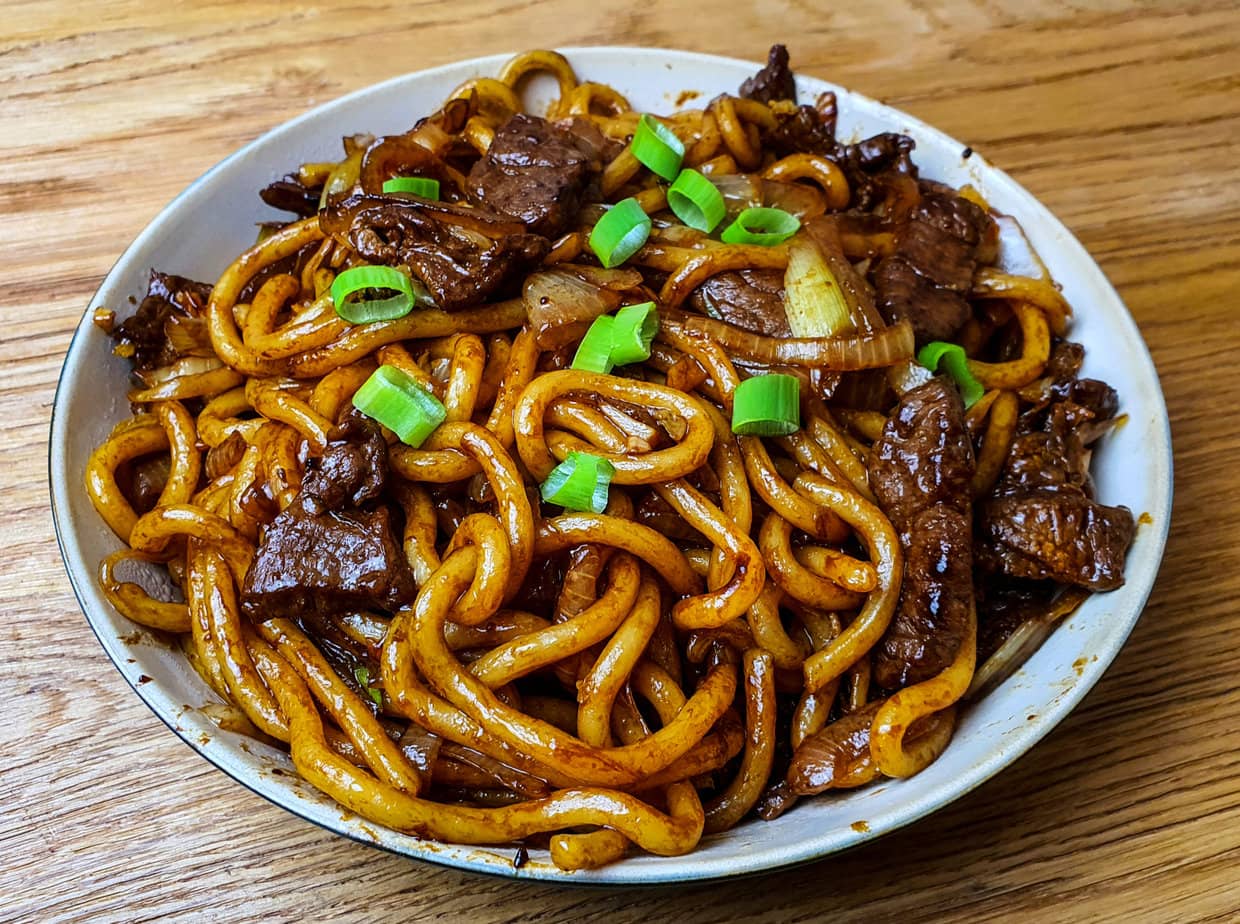
Served cold, udon are often tossed into salads with ingredients such as hard-boiled eggs, radishes, or cucumbers. Whatever the season, you can always enjoy a good bowl of udon in Japan. Their versatility is remarkable.
Where to buy them?
Most Asian groceries carry them. The packages look like this:
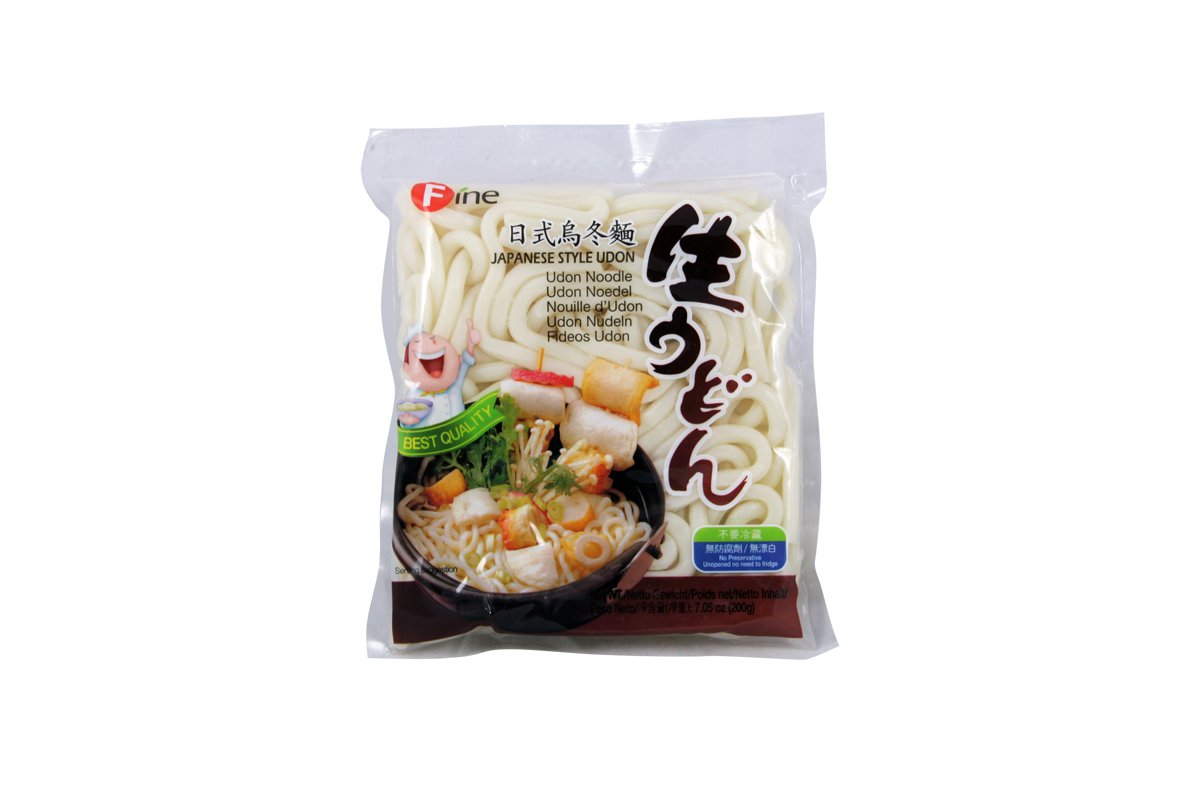
There are many package styles, but these are the most common. If you don’t have an Asian shop nearby, you can find them here on Amazon.
Origins of udon
There’s still no consensus on when they arrived in Japan. Most accounts agree that these noodles originate from the Kagawa region.
In the 1980s, they began to gain popularity because the city used them to attract visitors. From then until today, Kagawa has been a destination for culinary tourism and pilgrimage. If any travel agency is reading this, feel free to sponsor me.
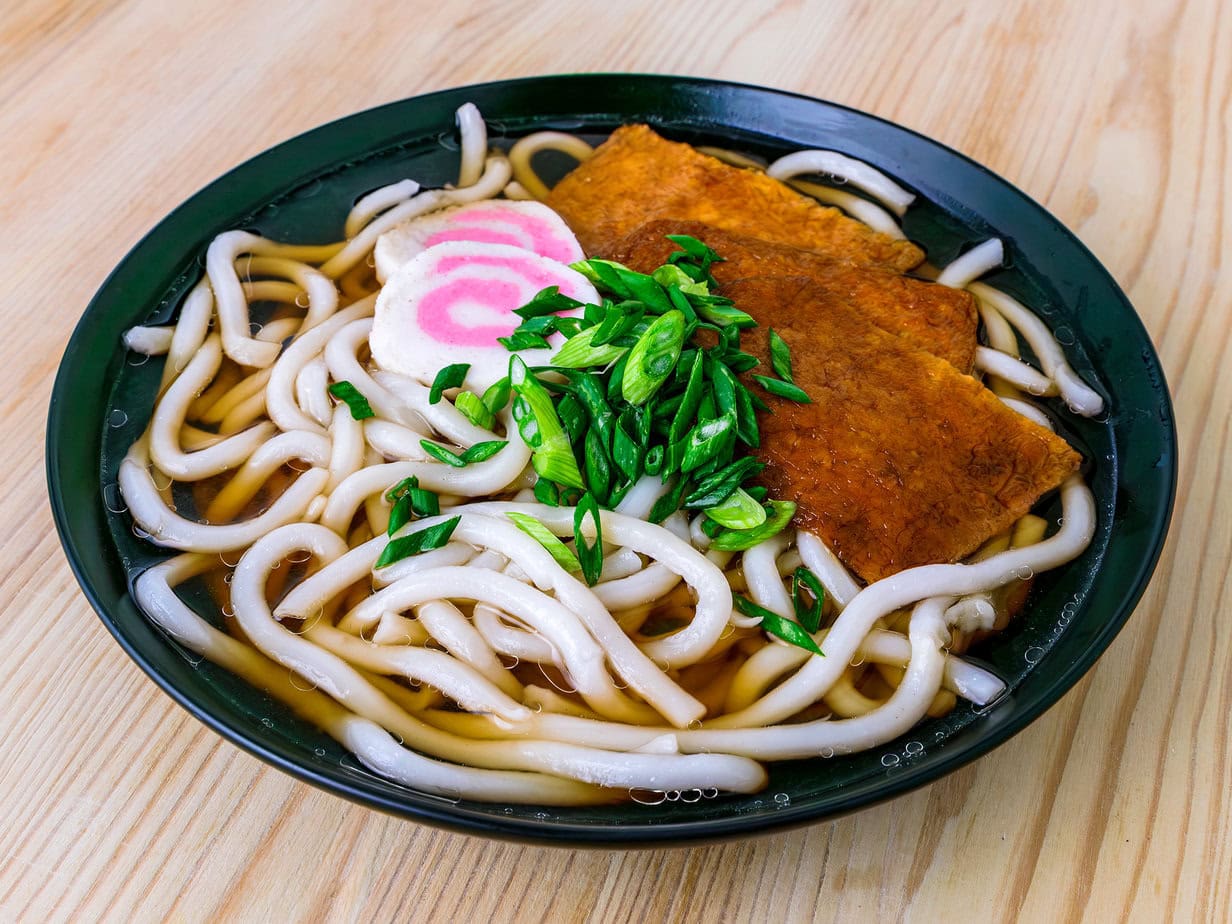
At first, however, udon were eaten only by Buddhist monks in temples. It was only in the Edo period (1603–1868) that udon noodles began to be enjoyed regularly outside temples.
Because it can be eaten quickly, like ramen, it became the go-to when people wanted a quick bite on the go. That’s why today Japan is full of restaurants specializing in udon and ramen—you’ll find one on almost every street corner. And that, my friends, is paradise.
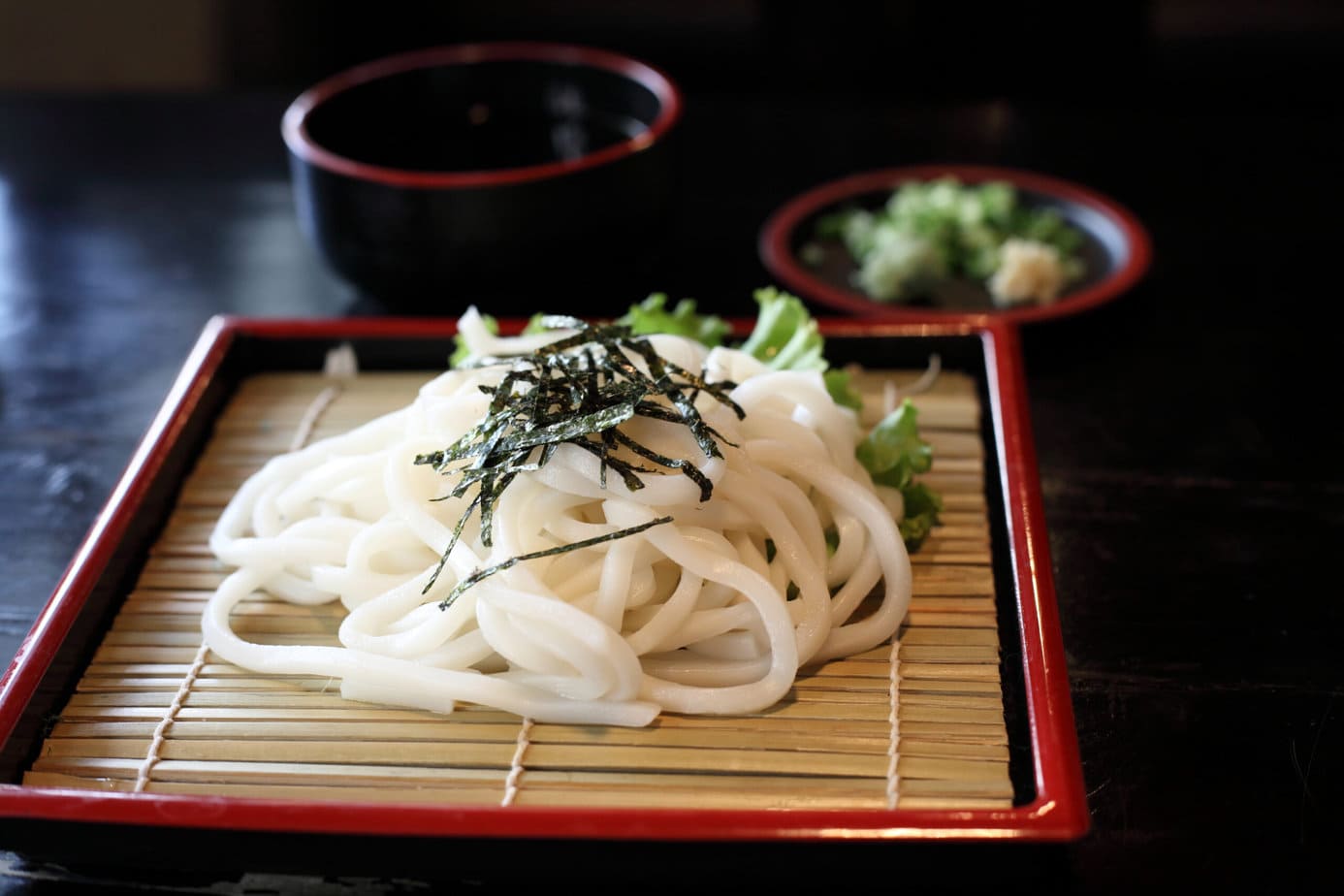
Equipment
- 1 Wok
Ingredients
- 1 portion of pre-cooked udon noodles
- 1 tablespoon light soy sauce
- 1 teaspoon dark soy sauce
Japanese Dressing
- 0.5 tablespoon rice vinegar
- 2 teaspoons honey
- 2 teaspoons sesame oil
- 1 teaspoon sesame seeds
Instructions
- Open the udon packet and add the noodles to boiling water. Stir gently until they loosen.1 portion of pre-cooked udon noodles
- Once loosened, drain in a colander.
- Whisk the dressing ingredients together in a bowl.1 tablespoon light soy sauce, 1 teaspoon dark soy sauce, 0.5 tablespoon rice vinegar, 2 teaspoons honey, 2 teaspoons sesame oil, 1 teaspoon sesame seeds
- Toss the noodles with the dressing in a bowl or mixing bowl; garnish with scallions, if desired.
